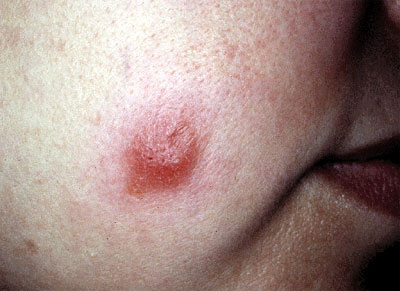|
|
|
Leishmaniasis
Leishmaniasis is a group of diseases caused by the organism Leishmania.
Lesions due to Leishmania major occur at sites of the body easily bitten by the phlebotomus fly.
Furuncle-like nodules appear and evolve into crusted, broadly based, nodules surrounded by an erythematous rim. Chronic ulceration can develop, with these ulcers healing with scars slowly over many months.
Other clinical variations include lupoid leishmaniasis, with lesions on the face suggestive of lupus vulgaris, and diffuse cutaneous leishmaniasis, clinically showing ill-defined nodules and plaques.
Leishmania brasiliensis typically produces paranasal and mucosal lesions, often with destruction of the nasal septum.
Visceral leishmaniasis, kala-azar, secondary to infection with Leishmania donovani can produce a diffuse papular eruption that on spontaneous resolution can leave hypopigmented macules.
Treatment:
- Pentavalent antimony 10-20 mg/kg/day for three to eight weeks is the usual treatment for most types of leishmaniasis.
- Pentamindine 4 mg/kg/week for the same duration remains an alternative.

Back to Dermatology Glossary - L Index |
Back to Dermatology Glossary Index
|